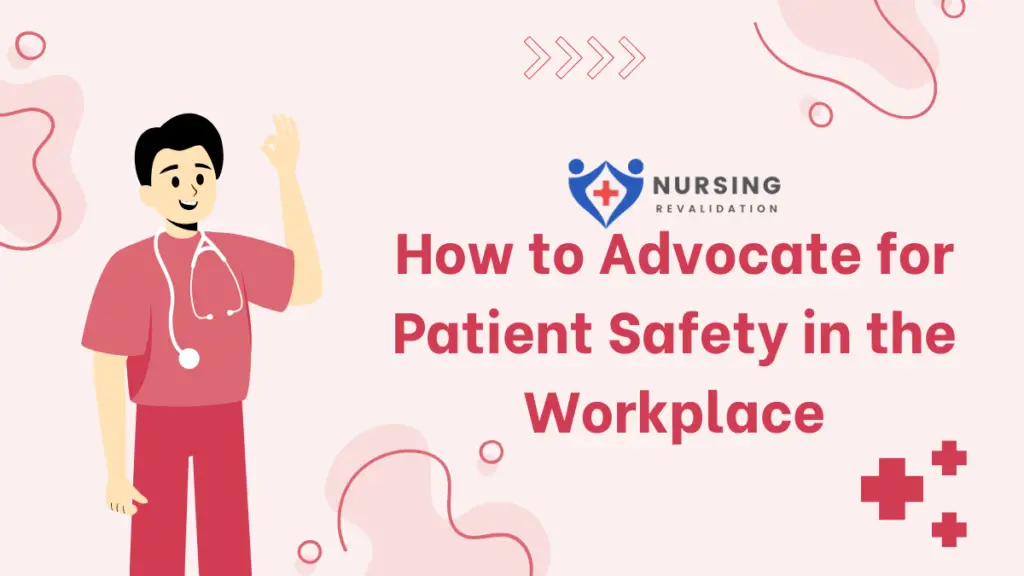In today’s rapidly evolving healthcare landscape, ensuring patient safety is paramount. As healthcare professionals, it’s our ethical duty to advocate for patient safety in every setting, including the workplace. Patient safety encompasses a broad spectrum of measures aimed at preventing medical errors, reducing harm, and ultimately saving lives. In this comprehensive guide, we’ll delve into actionable strategies for advocating for patient safety in the workplace, equipping you with the knowledge and tools necessary to make a meaningful impact.
Understanding Patient Safety
Before diving into advocacy strategies, it’s crucial to understand the concept of patient safety comprehensively. Patient safety involves the prevention of errors and adverse events in healthcare settings. These errors can occur at any stage of the healthcare process, from diagnosis and treatment to medication administration and discharge planning. By implementing robust safety protocols and fostering a culture of accountability, healthcare organizations can minimize the risk of harm to patients.
Table: Collaborative Advocacy for Patient Safety
| Initiative | Description |
|---|---|
| Multidisciplinary | Establish a multidisciplinary task force comprising |
| Task Force | representatives from various healthcare disciplines. |
| Gap Analysis | Conduct a comprehensive gap analysis to identify areas of |
| improvement and prioritize action items. | |
| Implementation | Develop and implement evidence-based interventions, such as |
| of Interventions | standardized protocols and checklists. |
| Ongoing Monitoring | Monitor outcomes and adjust strategies as needed based on |
| and Evaluation | real-time feedback and data analysis. |
The Role of Advocacy in Patient Safety
Advocacy plays a pivotal role in promoting patient safety within the workplace. As healthcare professionals, we have a unique opportunity to champion initiatives that prioritize patient well-being and minimize preventable harm. Advocacy efforts may involve raising awareness about safety protocols, identifying areas for improvement, and collaborating with stakeholders to implement evidence-based practices. By advocating for patient safety, we can drive positive change and enhance the quality of care delivery.
Strategies for Advocating for Patient Safety
- Education and Training Initiatives
- Establish comprehensive training programs to educate healthcare staff on patient safety principles and best practices.
- Incorporate simulations and case studies to enhance learning outcomes and reinforce key concepts.
- Provide ongoing education to ensure staff members stay updated on the latest advancements in patient safety.
- Promotion of Safety Culture
- Foster a culture of safety within the workplace by encouraging open communication and reporting of adverse events.
- Recognize and celebrate staff members who demonstrate a commitment to patient safety.
- Implement regular safety audits to identify areas for improvement and address potential risks proactively.
- Advocacy for Resources and Support
- Advocate for adequate staffing levels and resources to ensure optimal patient care.
- Collaborate with administration to prioritize investments in technology and infrastructure that enhance patient safety.
- Seek support from professional organizations and advocacy groups to amplify your voice and effect change on a larger scale.
- Utilization of Data and Evidence
- Collect and analyze data related to patient safety outcomes to identify trends and areas for improvement.
- Use evidence-based practices to inform decision-making and drive quality improvement initiatives.
- Share data and success stories with stakeholders to demonstrate the impact of advocacy efforts.
Conclusion
Advocating for patient safety in the workplace is not only a professional responsibility but also a moral imperative. By implementing the strategies outlined in this guide, healthcare professionals can empower themselves to be catalysts for change and champions for patient well-being. Through education, promotion of safety culture, advocacy for resources, and utilization of data and evidence, we can create safer environments for both patients and providers alike. Together, let’s commit to making patient safety a top priority in every healthcare setting.

